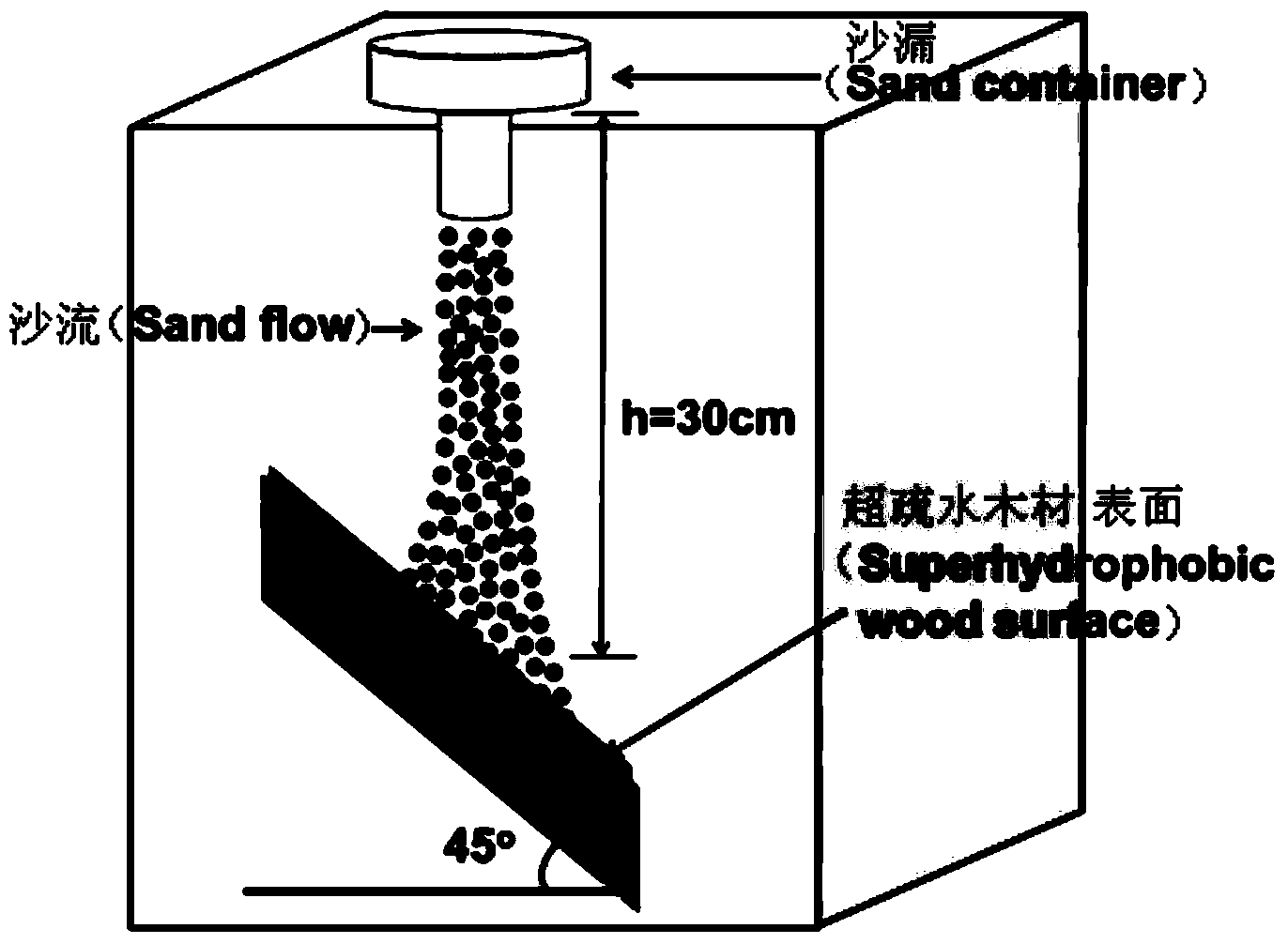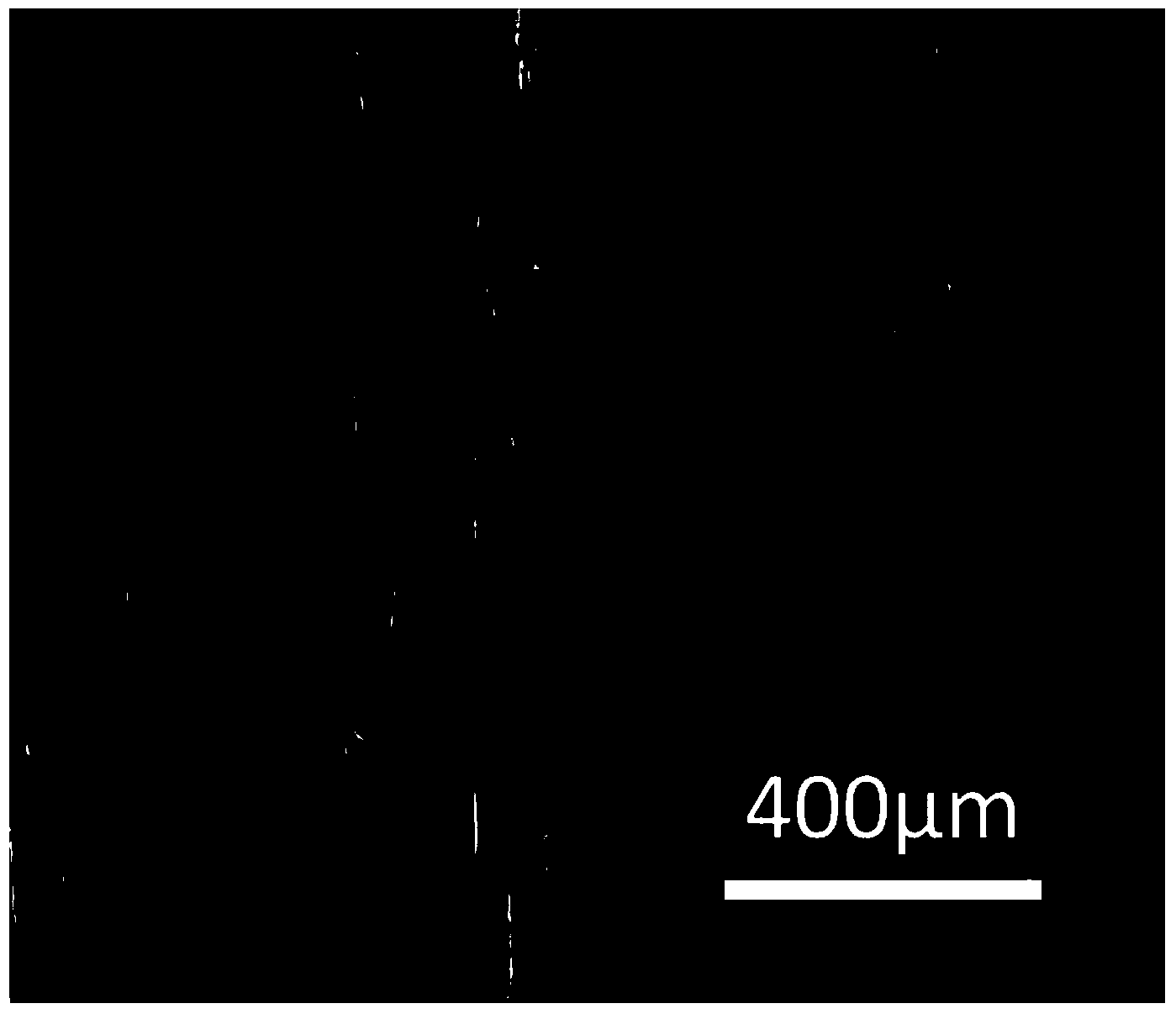Method for improving mechanical stability of super-hydrophobic wood
A mechanically stable and super-hydrophobic technology, applied in impregnated wood, wood impregnation, wood processing appliances, etc., can solve problems such as short service life, poor surface mechanical stability and durability, and poor mechanical properties of hydrophobic surfaces , to achieve the effects of short production cycle, improved mechanical stability and excellent hydrophobic performance
- Summary
- Abstract
- Description
- Claims
- Application Information
AI Technical Summary
Problems solved by technology
Method used
Image
Examples
specific Embodiment approach 1
[0029] Embodiment one: the method for improving the mechanical stability of superhydrophobic wood in this embodiment is realized through the following steps:
[0030] Step 1, the wood is washed with deionized water, absolute ethanol, and deionized water in sequence;
[0031] Step 2, epoxy resin is dissolved in acetone, makes epoxy resin solution;
[0032] Step 3, soaking the treated wood in step 1 in the epoxy resin solution prepared in step 2, and then drying at room temperature;
[0033] Step 4, modify submicron silica with KH550 silane coupling agent, and then disperse in deionized water to obtain modified silica liquid;
[0034] Step 5, immerse the wood treated in step 3 in the modified silica solution obtained in step 4, and dry at room temperature;
[0035] Step 6. Dissolve octadecyltrichlorosilane (OTS) in absolute ethanol to obtain an OTS ethanol solution, and then soak the wood treated in step 4 in the OTS ethanol solution, and then dry it to realize super-hydrophob...
specific Embodiment approach 2
[0039] Embodiment 2: This embodiment differs from Embodiment 1 in that the mass concentration of the epoxy resin solution described in Step 2 is 1%-5%. Other steps and parameters are the same as in the first embodiment.
[0040] The contact angle between superhydrophobic wood and water after treatment by the method of this embodiment is greater than 150°, and the rolling angle is less than 10°; and a stable rough structure-micro-nano secondary structure is formed on the surface of wood, so that the mechanical stability of superhydrophobic wood is greatly improved. improve.
specific Embodiment approach 3
[0041] Embodiment 3: This embodiment is different from Embodiment 1 or 2 in that: the soaking time in step 3 is 0.5h-1.5h, and the drying time is 0.5h-1h. Other steps and parameters are the same as those in Embodiment 1 or Embodiment 2.
[0042]The contact angle between superhydrophobic wood and water after treatment by the method of this embodiment is greater than 150°, and the rolling angle is less than 10°; and a stable rough structure-micro-nano secondary structure is formed on the surface of wood, so that the mechanical stability of superhydrophobic wood is greatly improved. improve.
PUM
| Property | Measurement | Unit |
|---|---|---|
| Particle size | aaaaa | aaaaa |
Abstract
Description
Claims
Application Information
 Login to View More
Login to View More - Generate Ideas
- Intellectual Property
- Life Sciences
- Materials
- Tech Scout
- Unparalleled Data Quality
- Higher Quality Content
- 60% Fewer Hallucinations
Browse by: Latest US Patents, China's latest patents, Technical Efficacy Thesaurus, Application Domain, Technology Topic, Popular Technical Reports.
© 2025 PatSnap. All rights reserved.Legal|Privacy policy|Modern Slavery Act Transparency Statement|Sitemap|About US| Contact US: help@patsnap.com



